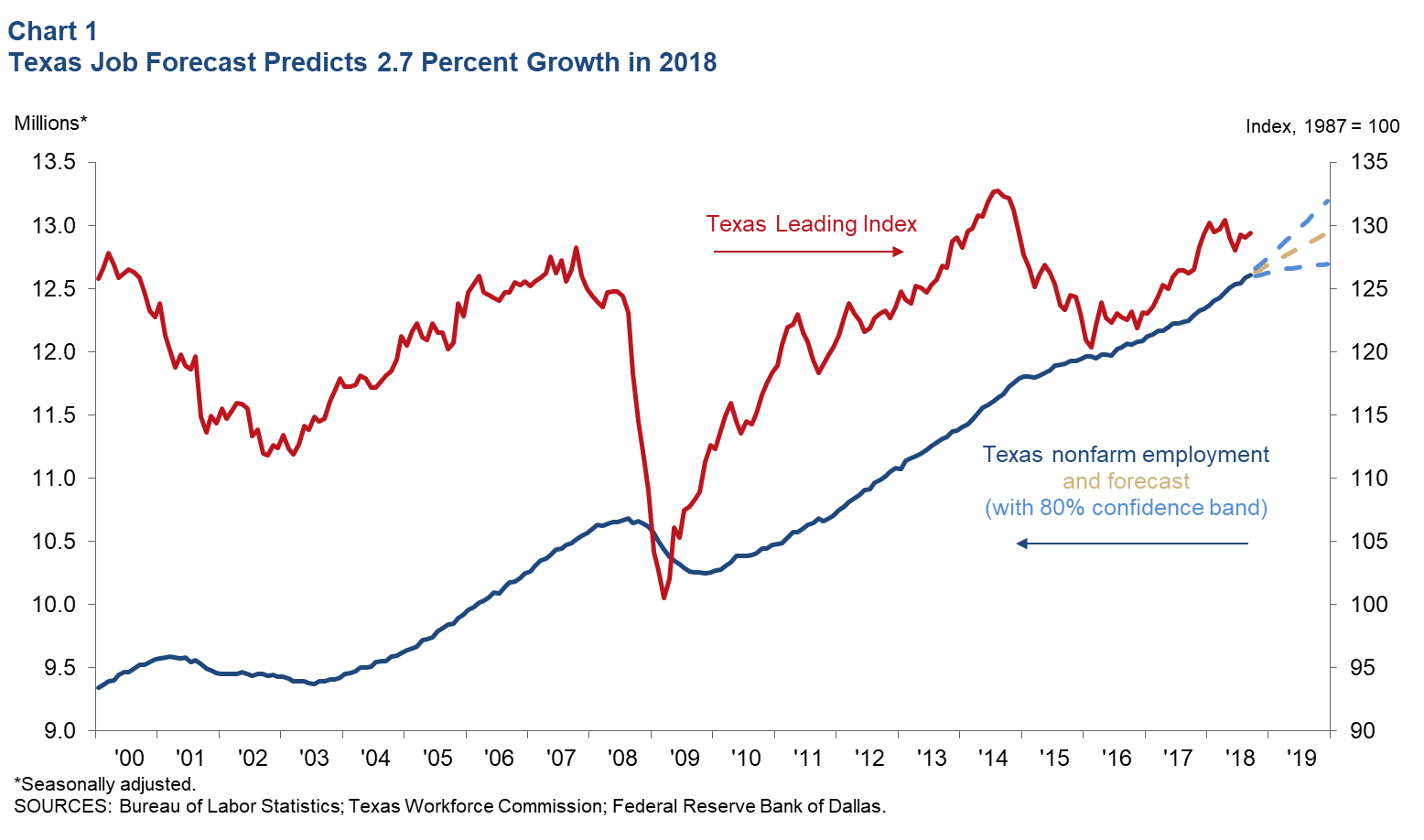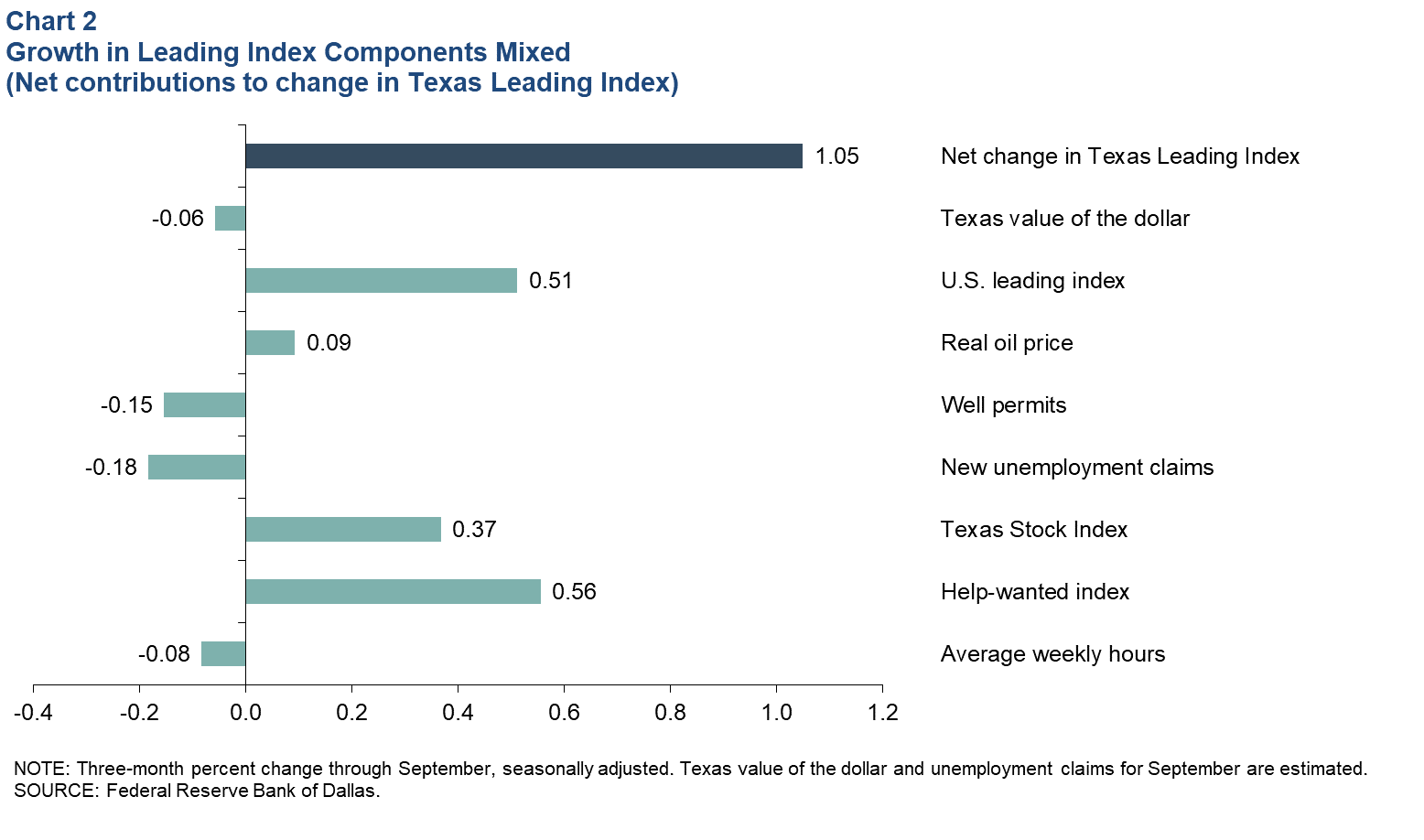Texas Employment Forecast

Incorporating September employment growth of 1.7 percent and moderate growth in the Texas Leading index, the Texas Employment Forecast suggests jobs will grow 2.7 percent this year (December/December), with an 80 percent confidence band of 2.2 to 3.2 percent. Based on the forecast, 336,300 jobs will be added in the state this year, and employment in December 2018 will be 12.7 million (Chart 1).
“Monthly job growth has been volatile over the past few months with a weakening in July, a sharp bounceback in August and then a slowing in September,” said Keith R. Phillips, Dallas Fed assistant vice president and senior economist. “Looking at the past three months, job growth was 2.4 percent—moderately slower than the 3.1 percent in the first half of the year. Job growth has been broad-based across metro areas with particular strength in Houston, which has grown at an annual rate of 3.9 percent over the past three months and 3.6 percent so far this year.”
The Dallas Fed’s Texas Leading Index increased a healthy 1.1 percent over the three months ending in September (Chart 2). Growth was mixed across components, with strength in the help-wanted index, the U.S. leading index and stock prices of Texas companies pulling the index up. An increase in initial claims for unemployment insurance and a decline in oil and gas well permits suppressed growth in the index, while other components had only slight impacts.


Next release: October 19, 2018
Methodology
The Dallas Fed Texas Employment Forecast projects job growth for the calendar year and is estimated as the 12-month change in payroll employment from December to December. The forecast reported above is a point estimate with 80 percent confidence bands; in other words, the true forecast lies within the bands on Chart 1 with 80 percent probability.
The Dallas Fed Texas Employment Forecasting Model is based on a transfer function that utilizes past changes in state employment along with past changes in the Dallas Fed Texas Leading Index (TLI). Changes in the TLI have an impact on employment with a lead time of three months, and the effect dies out slowly over time. The regression coefficients on lagged changes in employment and the TLI are highly statistically significant, and the model as a whole has been accurate relative to other forecasters over the past two decades.
The forecasting model has been in use at the Dallas Fed since the early 1990s, and the employment forecast has been published in the Western Blue Chip Economic Forecast (WBCF) since 1994. Phillips and Lopez (2009) show that the model has been the most accurate in forecasting Texas job growth relative to other forecasters in the WBCF. In particular, the model had the lowest root mean squared error and has been the closest to the actual the most times (nine of the last 17 years) out of five forecasters that have consistently participated in the survey.
For more details about the model and its performance, see “An Evaluation of Real-Time Forecasting Performance Across 10 Western U.S. States,” by Keith R. Phillips and Joaquin Lopez, Journal of Economic and Social Measurement, vol. 34, no. 2–3, December 2009.
Contact Information
For more information about the Texas Employment Forecast, contact Keith Phillips at keith.r.phillips@dal.frb.org.